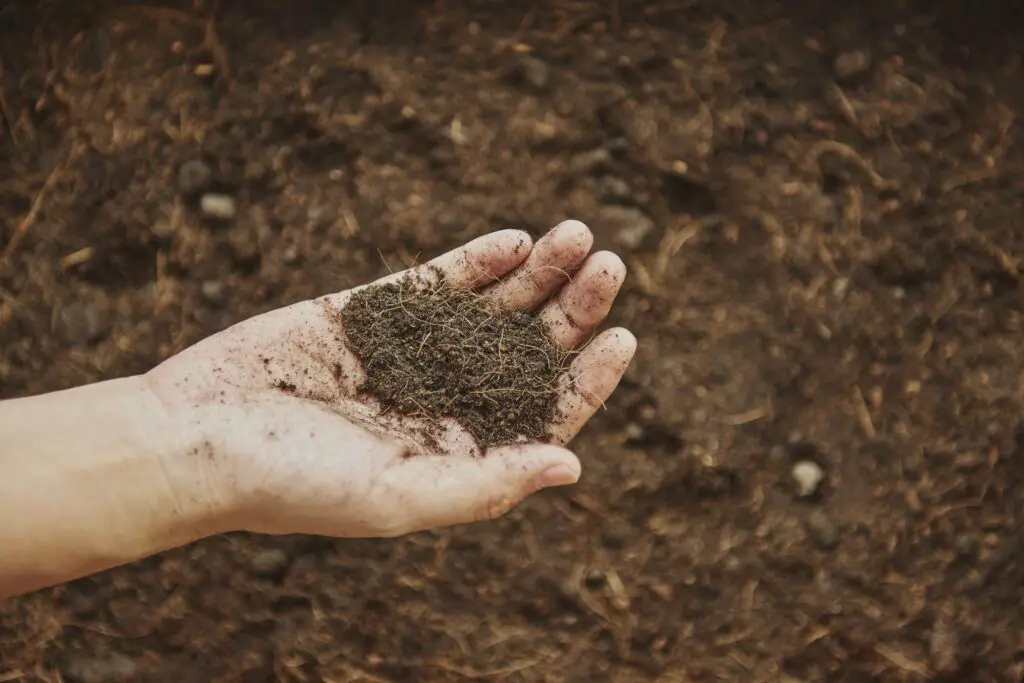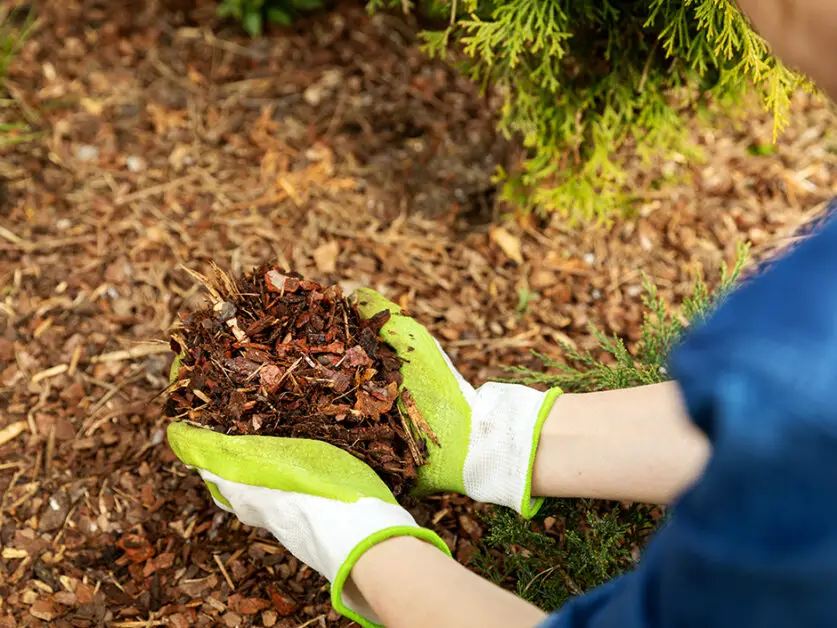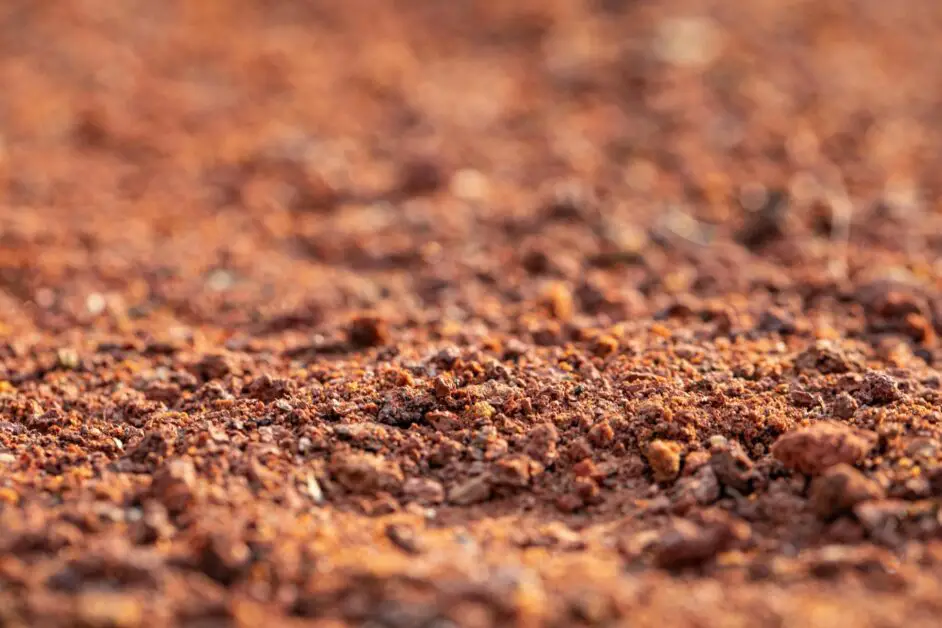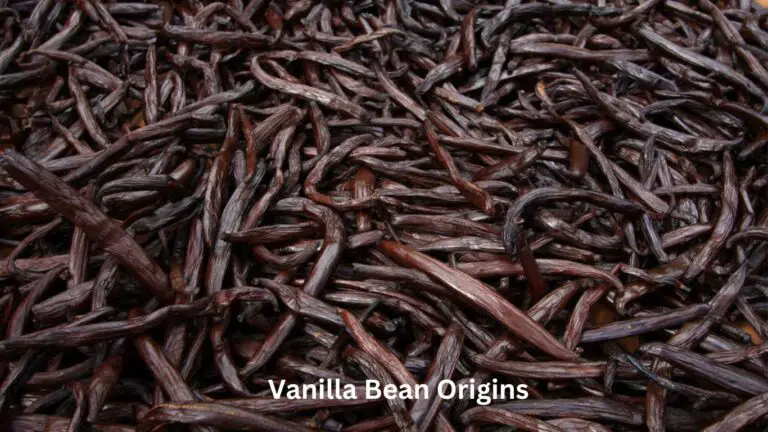Sandy Soil: How to Improve It and Make It More Productive
Table of Contents
Soil Composition: Understanding the Characteristics of Sandy Soil
Sandy soil is a type of soil with distinct characteristics that set it apart from other types of soil. One of the defining features of sandy soil is its texture, which is often loose and coarse. This loose texture allows for excellent drainage, which can be advantageous in certain gardening situations. However, it also means that sandy soil has a low water-holding capacity, often leading to faster drying out of the soil.

Another characteristic of sandy soil is its low nutrient-holding capacity. The loose particles of sand in the soil do not hold onto nutrients as effectively as other types of soil, making it more challenging for plants to access the necessary elements for healthy growth. As a result, sandy soil is often deficient in essential nutrients such as nitrogen, phosphorus, and potassium.
Understanding these characteristics of sandy soil is crucial for successful gardening. With the right knowledge and techniques, it is possible to overcome the challenges posed by sandy soil and create a thriving garden. From improving soil pH levels to selecting appropriate crops, there are various strategies that can be employed to enhance the quality of sandy soil and promote optimal plant growth. In the following sections, we will explore some key methods and considerations for improving sandy soil and maximizing the potential of your garden.
• Improve soil pH levels: Sandy soil tends to have a naturally acidic pH, which can further hinder nutrient availability for plants. Testing the soil’s pH and adding amendments such as lime or sulfur can help adjust the acidity levels and create a more favorable environment for plant growth.
• Add organic matter: Incorporating organic matter into sandy soil is essential for improving its nutrient-holding capacity. Compost, well-rotted manure, or other organic materials can be added to enrich the soil with essential nutrients and enhance its ability to retain water.
• Mulch regularly: Applying a layer of mulch on top of sandy soil helps conserve moisture by reducing evaporation rates. It also aids in moderating temperature fluctuations and suppressing weed growth. Organic mulches like straw, wood chips, or leaves are particularly beneficial as they break down over time and contribute to the overall improvement of the soil structure.
• Practice proper irrigation techniques: Due to sandy soil’s fast-draining nature, it is crucial to provide regular watering sessions that penetrate deep into the root zone. Deep watering encourages plants’ roots to grow deeper into the ground where they can access moisture more effectively.
• Choose appropriate crops: Certain plants are better suited for growing in sandy soils than others. Drought-tolerant species like succulents, cacti, lavender, or rosemary thrive in these conditions due to their ability to withstand low water availability. Additionally, selecting varieties that have adapted specifically for sandy soils can greatly increase gardening success.
By understanding these characteristics of sandy soil and implementing suitable strategies for improvement, gardeners can overcome challenges associated with this type of soil composition. With proper care and attention paid towards enhancing nutrient content and water retention capabilities, even gardens situated on sandy soils can flourish beautifully.
Understanding Soil pH Levels: Importance for Sandy Soil Improvement
Soil pH levels play a crucial role in the health and productivity of sandy soil. Sandy soil is known for its large particle size and low water-holding capacity, which can lead to rapid leaching of nutrients and increased acidity. Understanding the importance of maintaining proper soil pH levels is essential for improving the quality of sandy soil.
The pH scale ranges from 0 to 14, with values below 7 indicating acidity and values above 7 indicating alkalinity. Sandy soil tends to have naturally acidic pH levels, which can hinder the availability of essential nutrients to plants. Most plants thrive in slightly acidic to neutral pH ranges, typically between 6 and 7.5. Maintaining the optimal pH range in sandy soil is vital for facilitating nutrient uptake by plants and promoting overall plant health.

In acidic soil, key nutrients like phosphorus, potassium, and magnesium become less available for plant absorption. This can lead to nutrient deficiencies and negatively impact plant growth and productivity. On the other hand, overly alkaline soil can result in nutrient imbalances and hinder the uptake of micronutrients such as iron, manganese, and zinc. Therefore, regular monitoring and adjustment of soil pH levels are critical for sandy soil improvement. By understanding the importance of soil pH, gardeners can take appropriate measures to optimize nutrient availability and create a favorable growing environment for plants.
Identifying Nutrient Deficiencies in Sandy Soil
Identifying nutrient deficiencies in sandy soil is crucial for maintaining the health and productivity of your garden. Sandy soil is notorious for its fast-draining nature, which can lead to leaching of essential nutrients. As a result, plants grown in sandy soil are more susceptible to nutrient deficiencies compared to those grown in other soil types.
One common nutrient deficiency in sandy soil is nitrogen. Nitrogen is a vital nutrient that plays a fundamental role in plant growth and development. Symptoms of nitrogen deficiency include stunted growth, pale or yellowing leaves, and reduced yield. To identify this deficiency, conducting a soil test is essential. By analyzing the nutrient levels in your sandy soil, you can determine whether nitrogen is lacking and take appropriate measures to address the deficiency.
Another nutrient deficiency commonly found in sandy soil is potassium. Potassium is critical for various plant functions, such as water and nutrient uptake, disease resistance, and overall vigor. Plants suffering from potassium deficiency often exhibit symptoms like yellowing leaf margins, scorched or brown spots on leaves, and weak stems. Soil testing can help confirm if potassium levels are insufficient in your sandy soil, allowing you to rectify the deficiency by applying potassium-rich fertilizers or using organic amendments that contain potassium.
Identifying nutrient deficiencies in sandy soil is the first step towards ensuring the optimal growth and health of your plants. By understanding the symptoms and conducting soil tests, you can address these deficiencies promptly, providing your plants with the necessary nutrients for vibrant and thriving gardens.
The Role of Organic Matter in Sandy Soil Enrichment
Organic matter plays a vital role in enriching sandy soil and improving its overall quality. Sandy soil, with its loose structure and poor water and nutrient retaining capacity, can often pose challenges for gardeners. However, by incorporating organic matter, such as compost or well-rotted manure, into sandy soil, its texture and fertility can be significantly enhanced.
One key benefit of organic matter is its ability to improve soil structure. Sandy soil tends to be coarse and lack the cohesive structure necessary for retaining moisture and nutrients. When organic matter is added, it helps to bind the particles together, creating larger aggregates that improve the soil’s water-holding capacity. These larger aggregates also allow for better aeration, root penetration, and microbial activity, creating a healthier growing environment for plants.
In addition to its role in improving soil structure, organic matter is also a rich source of essential nutrients. As organic matter decomposes, it releases nutrients such as nitrogen, phosphorus, and potassium, which are crucial for plant growth. These nutrients are slowly released over time, ensuring a steady supply for plant roots. Furthermore, organic matter acts as a natural fertilizer, providing a wide range of micronutrients that are often lacking in sandy soil. By incorporating organic matter into sandy soil, gardeners can create a more nutrient-rich environment for their plants to thrive.
Overall, the addition of organic matter to sandy soil is a valuable practice for gardeners seeking to improve its fertility and productivity. By enhancing soil structure and providing essential nutrients, organic matter can transform sandy soil into a more favorable growing medium for a wide variety of plants. So, whether you’re planning a vegetable garden or a flower bed, don’t overlook the importance of incorporating organic matter into your sandy soil for optimal results.
Choosing the Right Fertilizers for Sandy Soil
Fertilizers play a crucial role in enriching sandy soil and ensuring healthy plant growth. When choosing the right fertilizers for sandy soil, it is essential to consider the specific nutrient deficiencies that might be present. Sandy soil has a low capacity to retain nutrients due to its coarse texture and rapid drainage. This often results in leaching, where essential nutrients are washed away before plants can absorb them. To address this, it is important to select fertilizers that provide the necessary nutrients in a form that is readily available to plants.
One of the key factors to consider when choosing fertilizers for sandy soil is nitrogen content. Nitrogen is an essential nutrient for plant growth, and sandy soil typically requires higher levels of nitrogen due to its quick drainage. Fertilizers with a higher percentage of nitrogen, such as those labeled with an N-P-K ratio of 20-10-10 or 16-6-4, can help replenish the nitrogen supply in sandy soil. However, it is important to monitor nitrogen levels closely to avoid over-fertilization, which can lead to environmental issues.

In addition to nitrogen, other nutrients like phosphorus and potassium are also vital for plant health. These nutrients play a significant role in root development, flowering, fruiting, and overall plant vigor. When selecting fertilizers for sandy soil, it is advisable to choose products that contain a balanced blend of these essential nutrients. Fertilizers labeled with an N-P-K ratio such as 10-10-10 or 14-14-14 provide an even distribution of nitrogen, phosphorus, and potassium and can help address multiple nutrient deficiencies simultaneously.
Stay tuned for the next section, where we will explore how applying compost can enhance the quality of sandy soil and provide numerous benefits for plant growth and health.
Applying Compost to Enhance Sandy Soil Quality
Composting is a valuable technique that can greatly improve the quality of sandy soil. Sandy soil is characterized by its low nutrient content and poor water retention, both of which can hinder plant growth. By applying compost, gardeners can introduce a variety of beneficial elements that will enhance the soil’s fertility and overall health.
One of the key benefits of compost is its ability to increase the organic matter content in sandy soil. Organic matter provides a host of advantages, such as improved water retention, increased nutrient availability, and enhanced soil structure. As compost decomposes, it releases essential nutrients, such as nitrogen, phosphorus, and potassium, which are then readily absorbed by plants. Moreover, the humus formed by the breakdown of organic matter acts as a sponge, retaining moisture and preventing the soil from drying out too quickly.
The application of compost to sandy soil also promotes the growth of beneficial microorganisms. These microscopic organisms, including bacteria, fungi, and earthworms, play crucial roles in the decomposition of organic matter and the release of nutrients. They help break down organic materials into simpler forms and create a healthy soil ecosystem. In turn, this fosters better nutrient cycling and improves the soil’s overall fertility.
In conclusion, incorporating compost into sandy soil is an effective method for enhancing its quality. It enriches the soil with organic matter, increases nutrient availability, improves water retention, and promotes the growth of beneficial microorganisms. By utilizing compost, gardeners can transform their sandy soil into a fertile and vibrant environment that supports healthy plant growth.
The Benefits of Mulching for Sandy Soil
Mulching is an essential practice for improving the quality of sandy soil and maximizing its benefits for gardening enthusiasts. One of the key advantages of mulching in sandy soil is its ability to retain moisture. Due to their coarse texture, sandy soils tend to drain water quickly, leading to water deficiency in plants. However, by adding a layer of organic mulch, such as compost, dry leaves, or straw, gardeners can create a protective barrier that reduces evaporation and slows down water loss from the soil. This allows the plants to access a steady supply of moisture, ensuring they receive the hydration they need to thrive.

In addition to water retention, mulching plays a crucial role in controlling soil temperature in sandy soil. With their loose composition, sandy soils are more prone to temperature fluctuations, which can be detrimental to plant roots. By applying mulch, gardeners can create a buffer layer that insulates the soil, preventing extreme temperature highs and lows. This creates a more stable and favorable environment for the roots, leading to better overall plant growth and health. Moreover, mulching also acts as a natural weed suppressant, smothering weed growth and reducing competition for nutrients and water. As a result, gardeners can spend less time weeding and more time enjoying the fruits of their labor.
Irrigation Techniques for Sandy Soil
Proper irrigation techniques are crucial for maintaining optimal soil conditions in sandy soil. Sandy soil has a high drainage capacity, meaning water passes through it quickly, resulting in poor water retention. As a result, plants growing in sandy soil may struggle to receive enough moisture and nutrients to thrive. Therefore, it is important to implement irrigation methods that maximize water absorption and minimize water loss.
One effective irrigation technique for sandy soil is drip irrigation. This method involves using a network of tubes with small holes that deliver water directly to the plant’s root zone. By applying water precisely where it is needed, drip irrigation minimizes water wastage and significantly reduces the risk of evaporation. For sandy soil, it is recommended to place the drip emitters close to the plants, as the water will quickly infiltrate the soil, reaching the root system efficiently.
This table outlines irrigation techniques suitable for sandy soil:
| Irrigation Technique | Description |
|---|---|
| Drip Irrigation | Delivers water directly to the plant roots through low-pressure emitters, minimizing water loss due to evaporation and runoff. |
| Mulching | Application of organic mulch (straw, wood chips) around plants to reduce water evaporation, maintain soil moisture, and prevent erosion. |
| Deep Watering | Slow, deep watering sessions to encourage root growth downward into the soil, reaching beyond the surface sand layers. |
| Raised Beds | Creating raised beds with amended soil and organic matter to improve water retention and create a better root environment. |
| Watering in Installments | Breaking irrigation sessions into shorter intervals to allow water absorption without causing excessive runoff. |
Another irrigation technique suitable for sandy soil is mulching. By applying a layer of organic mulch, such as wood chips or straw, on top of the soil, evaporation is reduced, and water retention is improved. The mulch acts as a protective barrier, preventing water from evaporating too quickly and minimizing soil erosion. Additionally, mulch helps regulate soil temperature and suppress weed growth, further enhancing the overall health of plants growing in sandy soil. When irrigating sandy soil, it is advisable to water deeply and infrequently, allowing the water to penetrate the soil deeply rather than applying frequent shallow waterings. By adopting these effective irrigation techniques, gardeners can maximize water efficiency and ensure the vitality of their plants in sandy soil conditions.
Preventing Erosion in Sandy Soil
Preventing erosion in sandy soil is crucial for maintaining the health and productivity of your garden. Sandy soil is naturally loose and is prone to erosion because it lacks the cohesive properties found in other soil types. When left unchecked, erosion can lead to nutrient depletion, loss of topsoil, and poor water drainage. To prevent erosion, there are several effective strategies that you can implement.
One of the most effective methods to prevent erosion in sandy soil is to establish ground cover. Planting a variety of ground cover plants, such as grasses or low-growing shrubs, helps to stabilize the soil by creating a network of roots that bind the soil particles together. These plants also act as a physical barrier, preventing the impact of raindrops that can dislodge sandy soil. Additionally, the dense foliage of ground cover plants slows down the velocity of runoff water, allowing it to infiltrate into the soil and reducing the chances of erosion. Selecting native or adapted species that are well-suited to your region is essential for the success of your ground cover efforts.
Another effective erosion prevention technique is mulching. Applying a layer of organic mulch, such as straw or wood chips, on the surface of sandy soil provides a protective barrier that prevents the direct impact of raindrops on the soil particles. This, in turn, reduces erosion by allowing water to infiltrate into the soil slowly. Mulch also helps to regulate soil temperature, conserve moisture, and suppress weed growth, making it a multi-purpose tool for maintaining healthy sandy soil. However, it is important to choose the right type and thickness of mulch, as excessive mulching can create an environment that is too moist for some plants and restrict oxygen exchange.-Regular monitoring and adjustment are necessary to ensure the optimal balance.
Crop Selection for Sandy Soil
Choosing the right crops for sandy soil is essential for successful gardening. Sandy soil, known for its loose, granular texture and excellent drainage, presents unique challenges and opportunities. When selecting crops, it is important to consider their adaptability to the soil’s characteristics such as low water retention and low nutrient content.
Several crops thrive in sandy soil conditions. Root crops like carrots, parsnips, and radishes do well in these types of soil due to their ability to penetrate easily. Additionally, vegetables such as lettuce, spinach, and cabbage are suitable for sandy soil as they prefer well-drained conditions. When it comes to fruits, strawberries and melons show better tolerance to sandy soil than many other varieties. On the other hand, crops that require high moisture or nutrient-rich soil, like tomatoes or corn, may face challenges in sandy soil and may require additional amendments for satisfactory growth.
It is also worth considering the benefits of legume crops in sandy soil. Legumes, such as beans and peas, have the unique ability to fix nitrogen in the soil, helping to enhance its fertility. This can be particularly beneficial for sandy soil, which may naturally lack essential nutrients. Incorporating legumes into crop rotation cycles can help improve soil quality over time and reduce the need for synthetic fertilizers.
By carefully selecting crops that are well-suited to sandy soil, you can increase your chances of a successful and productive garden. However, it is important to remember that understanding the specific needs of each crop and providing appropriate soil amendments, irrigation, and care are crucial for optimal growth. Stay tuned for our upcoming articles on crop rotation and cover crops as effective strategies for improving sandy soil conditions.
Crop Rotation and Cover Crops: Strategies for Sandy Soil Improvement
Crop rotation and cover crops are crucial strategies for improving sandy soil. Sandy soil is known for its poor water holding capacity and low nutrient content, making it challenging for plants to thrive. However, implementing crop rotation can help break the cycle of nutrient depletion and enhance soil fertility.
Crop rotation involves planting different crops in a specific order over a defined period of time. By rotating crops, you can reduce the risk of pests and diseases that target specific plants while also preventing the depletion of certain nutrients. For sandy soil improvement, it is advisable to integrate leguminous plants into the rotation. Legumes, such as peas, beans, and clover, have the remarkable ability to fix atmospheric nitrogen into a form that is easily accessible to plants. This nitrogen fixation process enriches the soil, making it more fertile for future crops.
Watch this video, to learn more about cover cropping:
Cover crops are another valuable tool in sandy soil improvement. These are plants specifically grown to protect and improve the soil during periods when the main crop is not growing. Cover crops, like winter rye, buckwheat, or annual ryegrass, establish a protective cover over the soil, reducing erosion and weed growth. Additionally, cover crops help increase organic matter and reduce nutrient leaching, contributing to soil structure and fertility. When incorporated into the soil, cover crops break down, adding valuable organic material and essential nutrients, which enhances the overall soil quality.
Utilizing Soil Amendments to Enhance Sandy Soil
Soil amendments play a vital role in enhancing the quality of sandy soil and improving its ability to retain water and nutrients. Sandy soil is characterized by its gritty texture and poor water-holding capacity, making it challenging for plants to thrive. However, by incorporating the right soil amendments, gardeners can significantly improve the overall structure and fertility of their sandy soils.
One of the most effective soil amendments for sandy soil is organic matter, such as compost or well-rotted manure. Organic matter not only helps to improve the soil’s water-holding capacity but also provides essential nutrients that are necessary for plant growth. When incorporated into sandy soil, organic matter acts as a sponge, absorbing and retaining moisture, while also releasing nutrients slowly over time. Additionally, organic matter encourages the development of beneficial microorganisms, which aid in breaking down organic matter, releasing nutrients, and improving overall soil fertility.
Another beneficial soil amendment for sandy soil is the addition of clay or silt. Adding clay or silt helps to bind the sandy particles together, resulting in improved water retention and reduced drainage. This amendment can be particularly useful for sandy soils that are prone to drought or excessive leaching. However, it’s important to note that clay or silt additions should be done in moderation, as excessive amounts can lead to soil compaction and impaired root growth.
By incorporating appropriate soil amendments, gardeners can transform their sandy soil into a fertile medium that supports healthy plant growth. From organic matter to clay or silt additions, each amendment serves a specific purpose in improving the structure and fertility of sandy soils. However, it’s crucial for gardeners to assess their soil’s individual needs and consult with local agricultural experts to determine the most suitable amendments for their specific gardening goals.
Managing Weeds in Sandy Soil
Weeds can pose a significant challenge for gardeners and farmers, particularly when dealing with sandy soil. Due to its loose and porous nature, sandy soil often lacks the ability to retain water and nutrients, making it more susceptible to weed invasion. To effectively manage weeds in sandy soil, it is crucial to implement a comprehensive approach that addresses both prevention and control.
Prevention is key when it comes to managing weeds in sandy soil. One effective strategy is to maintain a healthy and dense turf or ground cover that can outcompete weeds for resources. Regularly mowing the grass at an appropriate height and providing proper irrigation and fertilization can help establish a strong turf, minimizing the space available for weed growth. Additionally, utilizing landscape fabric or mulch around plants and in pathways can act as a barrier, suppressing weed germination and growth. Applying pre-emergent herbicides prior to weed seed germination can further aid in preventing weed establishment. Proper sanitation practices, such as removing weed-infested plant materials and cleaning garden tools, can also help prevent the spread of weeds.
Monitoring and Testing Sandy Soil for Continued Improvement
Monitoring and testing sandy soil is crucial in the continued improvement of soil health and overall plant productivity. By regularly assessing the characteristics and nutrient levels of sandy soil, gardeners and farmers can obtain valuable insights to guide their soil improvement efforts.
One important aspect of monitoring sandy soil is analyzing its pH levels. Sandy soil tends to be naturally acidic due to its low organic matter content and inability to retain nutrients. Regular pH testing helps determine if the soil is within the suitable range for optimal plant growth. By maintaining a balanced pH, nutrients become more available to plants, fostering their growth and development.
In addition to pH, nutrient deficiencies are a common concern when dealing with sandy soil. Nutrient analysis can identify specific elements that may be lacking, such as nitrogen, phosphorus, or potassium. This information allows for targeted fertilizer application, ensuring that plants receive the nutrients they require for healthy growth. By monitoring nutrient levels over time, gardeners can make necessary adjustments to their fertilization practices and prevent imbalances that may hinder plant health.
How can I determine the composition of sandy soil?
The composition of sandy soil can be determined by analyzing its physical properties, such as the particle size distribution, organic matter content, and mineral composition.
Why is understanding soil pH levels important for improving sandy soil?
Understanding soil pH levels is important for improving sandy soil because it helps determine the availability of nutrients to plants. Sandy soil typically has a higher pH, which can affect nutrient availability and plant growth.
How can I identify nutrient deficiencies in sandy soil?
Nutrient deficiencies in sandy soil can be identified through soil testing, plant tissue analysis, and visual symptoms exhibited by plants. These methods help determine which specific nutrients are lacking and need to be supplemented.
What role does organic matter play in enriching sandy soil?
Organic matter plays a crucial role in enriching sandy soil by improving its structure, water-holding capacity, and nutrient retention. It also enhances microbial activity, promoting nutrient availability to plants.
What factors should I consider when choosing fertilizers for sandy soil?
When choosing fertilizers for sandy soil, consider the nutrient requirements of your plants, the nutrient content of the fertilizer, and the application rate. It is essential to use fertilizers with slow-release or controlled-release formulations to prevent nutrient leaching.
How can applying compost enhance sandy soil quality?
Applying compost to sandy soil enhances its quality by increasing organic matter content, improving soil structure, enhancing water retention, and providing essential nutrients to plants. It helps to increase microbial activity and overall soil fertility.
What are the benefits of mulching for sandy soil?
Mulching sandy soil helps reduce evaporation, retain soil moisture, regulate soil temperature, suppress weed growth, and prevent erosion. It also aids in improving soil structure and adding organic matter as the mulch breaks down.
What irrigation techniques are suitable for sandy soil?
Irrigation techniques suitable for sandy soil include frequent and shallow watering to prevent water runoff and leaching, drip irrigation to provide water directly to the plants’ root zones, and using moisture sensors to monitor soil moisture levels.
How can erosion in sandy soil be prevented?
Erosion in sandy soil can be prevented by planting windbreaks or shelterbelts, creating contour strips or terraces, establishing groundcovers or cover crops, using mulch, and practicing proper water management techniques.
What considerations should I keep in mind when selecting crops for sandy soil?
When selecting crops for sandy soil, consider the drought tolerance, nutrient requirements, and adaptability of the crops. Choose crops that can thrive in sandy soil conditions and have a higher tolerance to drought and nutrient deficiencies.
How can crop rotation and cover crops contribute to sandy soil improvement?
Crop rotation and cover crops contribute to sandy soil improvement by reducing nutrient depletion, controlling weeds and pests, improving soil structure, increasing organic matter content, and enhancing nutrient availability by fixing nitrogen.
How can soil amendments be utilized to enhance sandy soil?
Soil amendments, such as gypsum, compost, peat moss, and lime, can be utilized to enhance sandy soil by improving its structure, increasing water-holding capacity, balancing pH levels, and providing essential nutrients.
What are effective strategies for managing weeds in sandy soil?
Effective strategies for managing weeds in sandy soil include using mulch to suppress weed growth, practicing proper watering techniques to prevent weed germination, regular cultivation or hoeing, and applying pre-emergent or post-emergent herbicides.
Why is monitoring and testing sandy soil important for continued improvement?
Monitoring and testing sandy soil is important for continued improvement as it helps assess nutrient levels, pH levels, organic matter content, and overall soil health. This information allows for appropriate adjustments to soil management practices for optimal plant growth and productivity.

Pallavi Gupta is a burgeoning writer at SouthElMonteHydroponics, blending her passion for data analysis with a keen interest in biotechnology. Currently pursuing a Bachelor’s in Biotechnology at Amity University, Pallavi delves into the intricacies of life sciences while gaining hands-on experience in the exciting world of data analysis. Her unique background provides a fresh perspective on hydroponic farming, as she explores the intersection of biotechnology and sustainable agriculture. Through her writing, Pallavi aims to bridge the gap between data-driven insights and innovative farming practices, inspiring others to harness technology for a greener future.







